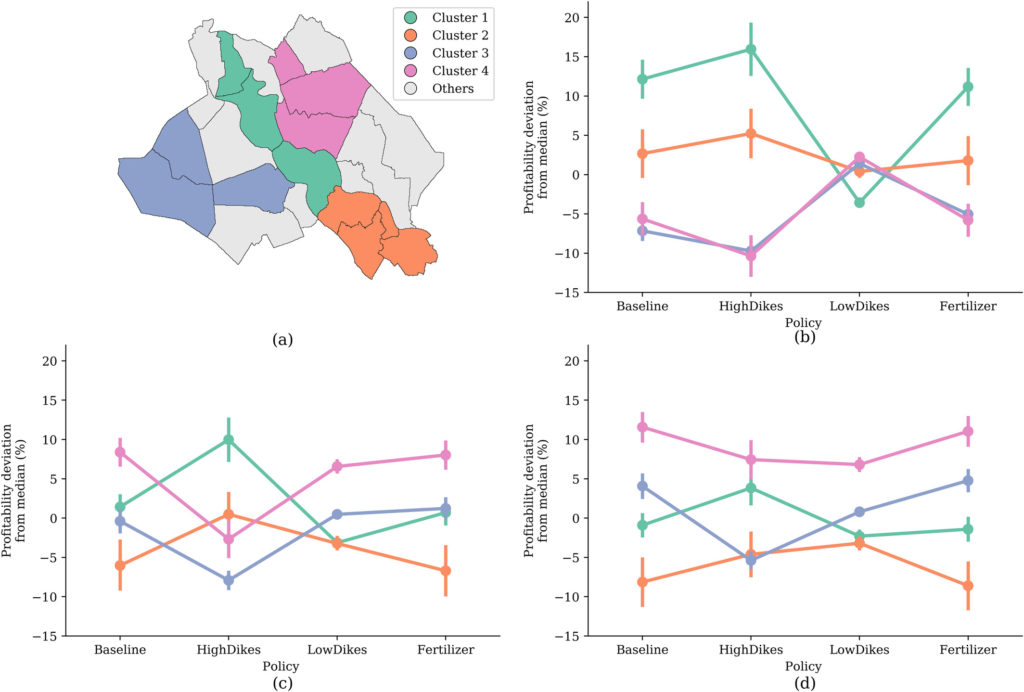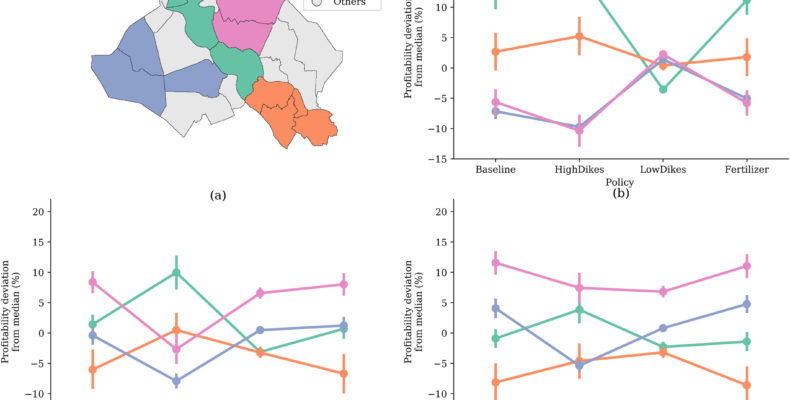, , , , , , & (2021). Accounting for multisectoral dynamics in supporting equitable adaptation planning: A case study on the rice agriculture in the Vietnam Mekong Delta. Earth’s Future, 9, e2020EF001939. https://doi.org/10.1029/2020EF001939
Abstract:
The need for explicitly considering equity in climate change adaptation planning is increasingly being recognized. However, evaluations of adaptation often adopt an aggregated perspective, while disaggregation of results is important to learn about who benefits when and where. A typical example is adaptation of rice agriculture in the Vietnam Mekong Delta. Efforts focused on flood protection have mainly benefitted large‐scale farmers while harming small‐scale farmers. To investigate the distributional consequences of adaptation policies in the Vietnam Mekong Delta, we assess both aggregate total output and equity indicators, as well as disaggregated impacts in terms of district‐level farming profitability. Doing so requires an adequate representation of the multisectoral dynamics between the human and biophysical systems which influence farming profitability. We develop a spatially‐explicit integrated assessment model that couples inundation, sedimentation, soil fertility and nutrient dynamics, and behavioral land‐use change and farming profitability calculation. We find that inter‐district inequality responds in a non‐linear way to climatic and socio‐economic changes and choices of adaptation policies. The patterns of who wins and who loses could change substantially when a different policy is implemented or if a slightly different uncertain future materializes. We also find that there is no simple ranking of alternative adaptation policies, so one should make trade‐offs based on agreed preferences. Accounting for equity implies exploring the distribution of outcomes over different groups over a range of uncertain futures. Only by accounting for multisectoral dynamics can planners anticipate the equity consequences of adaptation and prepare additional measures to aid the worse‐off actors.

